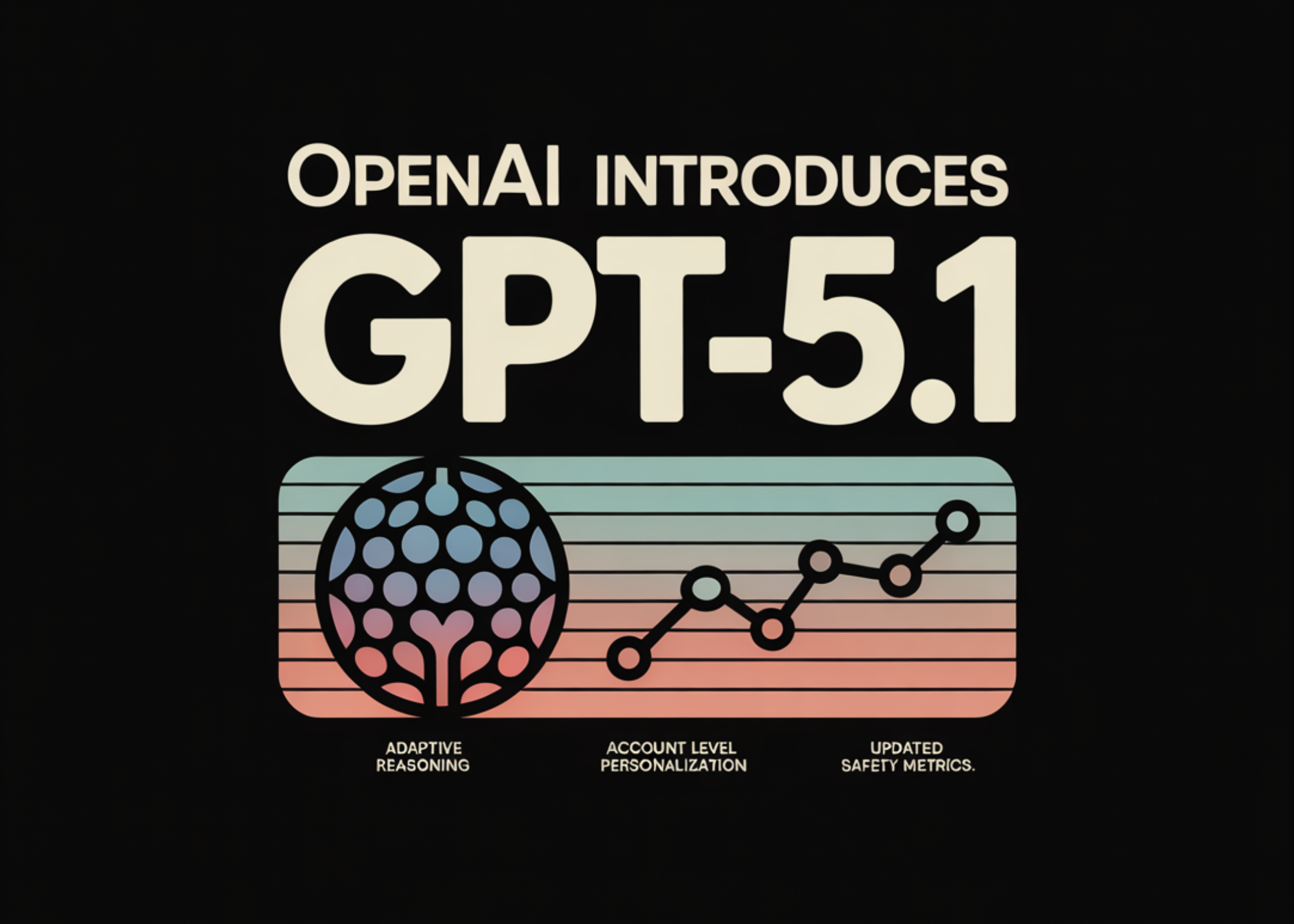OpenAI has released GPT-5.1 as the next iteration in the GPT-5 family, with 2 core variants, GPT-5.1 Instant and GPT-5.1 Thinking. The update focuses on 3 axes, adaptive reasoning behavior, clearer explanations, and stronger control over tone and safety.
Model Lineup And Positioning
GPT-5.1 Instant is the default conversational model in ChatGPT. OpenAI describes it as the most used model, with a warmer default tone and improved instruction following. GPT-5.1 Thinking is the advanced reasoning model. It exposes explicit thinking time and now adjusts that time more precisely to the question. GPT-5.1 Auto continues to route queries between these variants so most end users do not need to select models manually.
GPT-5.1 Instant, Adaptive Reasoning For Everyday Use
GPT-5.1 Instant keeps latency low for typical chat use while adding adaptive reasoning. For simple prompts, the model responds quickly with a shallow internal pass. For more difficult prompts such as multi step math or coding problems, it chooses to spend more internal compute before answering. This behavior yields higher scores on evaluations like AIME 2025 and Codeforces relative to earlier GPT-5 Instant versions, while staying responsive for casual use.
Instruction following is another explicit target. In OpenAI’s examples, GPT-5.1 Instant is more reliable on constraints such as ‘always respond with 6 words’ and maintains that constraint across turns. This is relevant when you build tools that rely on strict formats or short natural language responses, for example structured outputs, message templates, or chained tools that expect bounded length.
The combination of adaptive reasoning and stricter instruction adherence makes GPT-5.1 Instant a more predictable front end for many agent workflows where most calls are simple, but a tail of calls require deeper reasoning.
GPT-5.1 Thinking, Dynamic Compute Allocation
GPT-5.1 Thinking takes the GPT-5 Thinking approach and tightens how thinking time is used. The model now adapts its internal thinking time based on prompt complexity. On a representative distribution of ChatGPT tasks with Standard thinking time, GPT-5.1 Thinking is roughly 2x faster than GPT-5 Thinking on the fastest tasks, and roughly 2x slower on the slowest tasks.
This matters for workloads where you want a single model to handle both light and heavy queries. Lightweight queries do not pay for long chains of thought. Hard reasoning and planning tasks receive more internal steps without any new API surface.
GPT-5.1 Thinking responses use less jargon and fewer undefined terms compared to GPT-5 Thinking. This reduces the time spent interpreting verbose answers and makes the model more suitable as an interactive tutor on topics such as statistics, algorithms, or system design.
On the API, GPT-5.1 Instant is exposed as gpt-5.1-chat-latest, and GPT-5.1 Thinking appears as gpt-5.1. Both include adaptive reasoning by default.
Personalization, Preset Styles And Fine Grained Tone Control
Alongside the model update, ChatGPT gets a more explicit personalization layer. Users can choose a base style such as Default, Professional, Friendly, Candid, Quirky, Efficient, Nerdy, or Cynical from a personalization screen. These presets apply across all models, including GPT-5.1.
OpenAI is also experimenting with finer sliders in settings. Users can adjust how concise, warm, or scannable responses should be, and how often emojis appear. ChatGPT can propose updates to these preferences inside a conversation when it detects repeated tone requests. Preferences now apply immediately to both new and ongoing chats, which is a shift from earlier behavior where changes only affected new conversations.
Safety Metrics And Preparedness Classification
The GPT-5.1 keeps the same overall safety framework as GPT-5 and provides updated baseline metrics. GPT-5.1 Instant and GPT-5.1 Thinking use the same class of mitigations described in the GPT-5 system card, including filters for disallowed content, routing for sensitive cases, and policy aligned refusals.
On the Production Benchmarks for disallowed content, gpt-5.1-instant improves over gpt-5-instant in all listed categories. For example, not_unsafe scores reach 0.918 for illicit or violent content and 0.897 for hate content.
For jailbreak robustness, measured with the StrongReject evaluation, gpt-5.1-instant reaches a not_unsafe score of 0.976 compared to 0.850 for gpt-5-instant and 0.683 for gpt-5-instant. gpt-5.1-thinking scores 0.967, which is close to gpt-5-thinking at 0.974.
Key Takeaways
- GPT-5.1 introduces 2 main variants, GPT-5.1 Instant and GPT-5.1 Thinking, plus GPT-5.1 Auto as a router inside ChatGPT, and is positioned as an in generation upgrade within the GPT-5 family, not a new model generation.
- GPT-5.1 Instant uses adaptive reasoning so it spends more compute on hard prompts and less on simple ones, which improves math and coding benchmarks such as AIME 2025 and Codeforces while keeping low latency and stronger instruction following for typical chat workloads.
- GPT-5.1 Thinking allocates dynamic thinking time per query, is around 2 times faster than GPT-5 Thinking on easy tasks and about 2 times slower on the hardest tasks at Standard thinking, and produces clearer, less jargon heavy explanations for technical questions.
- ChatGPT adds a personalization layer on top of GPT-5.1 with preset styles such as Default, Professional, Friendly, Efficient, Nerdy and others, along with planned sliders for conciseness and warmth, so tone control moves partly from prompts into persistent user settings that apply across chats and models.
- GPT-5.1 reuses the GPT-5 safety framework and mitigations, improves gpt-5.1-instant safety scores across all disallowed content categories versus gpt-5-instant, significantly increases jailbreak robustness on StrongReject, and keeps preparedness assessments anchored in the GPT-5 system card for high risk domains such as biological and chemical capabilities.
The post OpenAI Introduces GPT-5.1: Combining Adaptive Reasoning, Account Level Personalization, And Updated Safety Metrics In The GPT-5 Stack appeared first on MarkTechPost.




